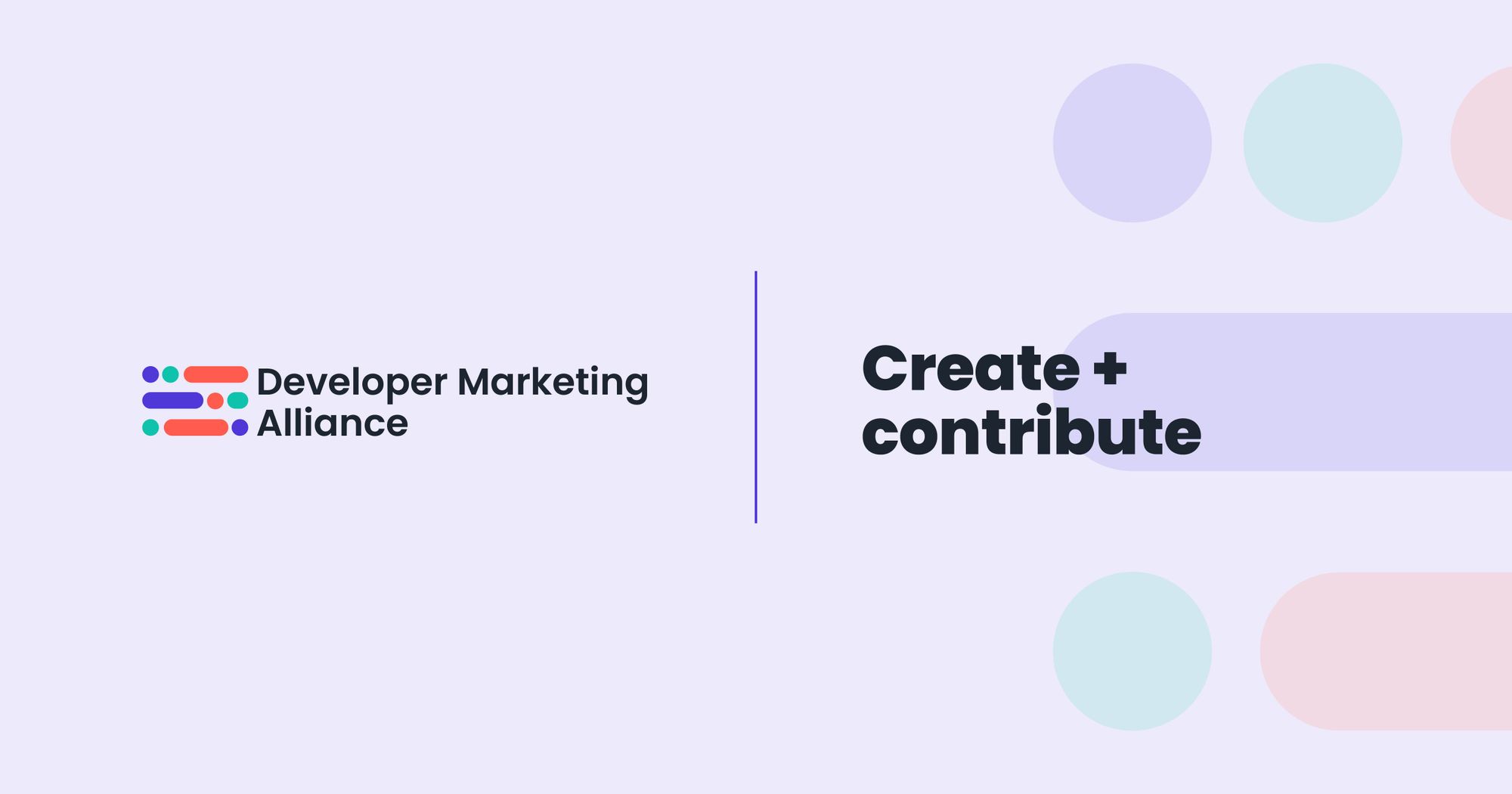B2B and B2B are established marketing terms, but what about B2D? How did the B2D niche come in to fill the gaps and figure out the challenges from the traditional B2B market?
As a marketer, understanding your customer is key and even more so as a developer marketer. In this article, experts Mike Stowe and Emma Datny take us through the rise of developer marketing by sharing their insights and experience.
Here are our main talking points:
- Building a bridge between B2B and B2D
- Refining your product positioning and messaging
- How to measure success
- Achieving buy-in and upscaling your marketing to the developer audience
- Customer advocacy: multinational vs. a scale up
- What’s next for developer marketing?
Before we dive in…
Who are we?
We’re Emma Datny, Director of Product Marketing at Velocity and Mike Stowe, Director of Developer Marketing at RingCentral.
“I'm based in Tel Aviv but I'm originally from the States. I don’t have a formal developer background, but a background in medieval history that led me to journalism. Through journalism, I then worked for B2C and B2B companies.
"Now, however, I’m in a B2D role in developer marketing, which I've been in for the past few years, and I'm currently at a startup called Velocity based in Tel Aviv.” - Emma Datny
“I work at a company called RingCentral, which provides communications solutions. I started off as a self-taught developer, meaning I stayed online and figured everything out myself (and also did a lot of things wrong). The community helped me out and I decided I want to pay it forward.
"As I made the transition, trying to pay it forward, I found out I could get paid to do this and help other developers grow their skills. Then I also realized there were some challenges in this space.
"Overall, it's been a very fun journey for me to learn more about marketing from the developer side.” - Mike Stowe
Building a bridge between B2B and B2D
Emma
As a product marketer, understanding your customer is key. In my current role, I’m marketing a developer tool. We allow developers to accelerate their productivity through on-demand production-like environments.
It’s very focused on helping the developer persona. In many cases, whether it's through APIs or through SaaS products, developers have become the end user as well as a buyer which means you have to have a particular marketing approach of how you're going to reach out to them and that's where B2D comes up.
When you have companies that target two different personas, you’re targeting the developers but that's not your full persona: you’re also targeting the CTOs or the head of R&D as well, not only the hands-on practitioners.
They’re still a part of the development world; they’re people who understand those pain points and want to solve them.
This is where the B2D niche has come in to fill those gaps and figure out the challenges that we've had just from the traditional B2B market, how you can transition a lot of this over and then speak to the customers you're trying to reach out to, enable and help.

Mike
In my role, one market we focus on is B2B or what we call the non-technical decision makers. We ensure they understand the benefits of the platform and what they can do with it, and that they have the tools to present it to their developers or to their engineering teams.
The second market we focus on is definitely B2D. Anytime you sell a solution, you have to make sure your customers are successful. We make sure they’re successful with the SaaS solution and with the premium integrations through our community; but also, our developers come in and they're highly successful building with RingCentral.
In my experience, it's very focused on those two companies and also bridging unique gaps such as the messaging you use for traditional marketing vs. for developer marketing or having a product page that speaks to both audiences.
Refining your product positioning and messaging
Mike
The first thing about messaging is you have to look at two very different audiences and, as you speak to developers vs. to your sales team, you're gonna find different challenges there.
Our sales teams aren't thinking about the technical aspects of what developers are looking for, so the first thing we did was write an introductory course. We had to start at square one but, for them, it was all about how it benefits the customer so they can tell them a tangible story.
In terms of the content we create for the sales team, it's storytelling with real-life examples, which means taking advantage of the typical product marketing collateral, such as case studies, so they can hand the non-technical decision maker the case study, or they can read the case study and tell the story themselves.
On the developer side, they typically want less fluff and abstract messaging and more information on what they can do with it. There's this notion that developers hate marketing but what they hate is aggressive marketing.
For developers, it’s all about how technology helps them succeed. Your job as a marketer is to give them the information they need, make it straight-to-the-point and show how it's going to benefit them. If you make claims, expect them to be tested by the developer community as well. Be very authentic and transparent in terms of your capabilities.
Emma
To build our website, we had initial conversations with over 100-200 developers, and some of them converted into POC (proof of concept) customers, so we took this information and used their pain points and needs to build the messaging around them.
We wanted to create a page at the start that wasn’t too fluffy to appeal to the developer, but also to have a high-level message of who we are.
Again, developers don't dislike marketing, they just don't want to feel like they're being sold to, and, essentially, they want to try things out. Even if you're in the beta stage, being able to give them as many tools as possible to see how it actually works is key.
We could see a lot of value that came out from just the switch of not putting in a high-level blog straightaway and only doing the documentation which could be applied to a messaging point-of-view.
Mike
One of the mistakes a lot of companies make as they're building their developer marketing is coming up with a strong marketing strategy but not look at what the user experience or the onboarding for the developer is like.
Focusing on the proper hierarchy of needs is essential. The first three pillars are:
- When can they use your application? Can they build on it?
- Building a strong community so they can get help from each other.
- Thought leadership or education.
The first pillar is the most important; without it, the others don’t make sense.
How to measure success
Mike
How to measure success is going to depend on your company and your structure.
At RingCentral, the way we look at our metrics is, firstly, what the company objectives are for the year, what our market objectives are because we report to marketing, and then we focus on our platform objective (our platform includes both the developer marketing side, but also our app gallery integrations and IAC partners).
Each level of those metrics roll into what we're trying to accomplish as a company.
The platform marketing metrics will be tied to revenue. A lot of companies focus on what we call ‘vanity metrics’ which is the number of API calls. Looking at the number of API calls is great for the early stage and showing you're growing this program but, as it grows, that number doesn't tell the business what type of return they're getting on their spend.
Understanding the stage you’re at is really important if you're a startup level vs. if you're a more mature program, as your metrics evolve.
As we scale up, we’re focused on the onboarding experience: how quick is it to onboard and what is the feedback? In an early stage product, we really value the user experience and the usage itself.
Our focus is to make the developer experience as seamless as possible, both within what our product provides to them, but, also, from an onboarding experience of the product.

Achieving buy-in and upscaling your marketing to the developer audience
Mike
Developer marketing is a new field and it's still evolving. How the developer marketing or developer relations will be structured, whether it’s one or two departments working together or not a dedicated department, depends on the company and what the company is looking for.
The second challenge is building a developer program. You could go to 10 different executives and they will give you 14 different answers on what you should be doing.
That means we have to align on strategy and what we have to accomplish, and we have to do just as much marketing internally as we do externally. When you're working at a company whose primary focus is B2B, you have to do the same marketing to your internal teams, such as setting up training sessions.
If you're not doing that internal marketing, you may be doing great work externally but a lot of people aren't going to be able to see it because they’re focused on non-technical decision makers and not seeing the reactions developers are having in the community.
Customer advocacy: multinational vs. a scale up
Emma
The Developer Advocate or Developer Evangelist as a full-time role has been new and buzzworthy in the past few years. There wasn’t a role like this at my previous company, which was a multi-corporation.
We were able to leverage solution architects, developers, product teams, and customer-facing folks who had developer backgrounds. A part of their day-to-day activities was to engage in customer advocacy relations which has now become a full-time role.
I do believe that developer relations are important, especially in a small company, when you want to engage with your customers and the conversations between you and your team are focused on delivering the value.
It's great to have a dedicated customer-facing person who can outreach to developers to bring the feedback back in. Developer evangelists are passionate about the community and want to help others grow.
Oftentimes, this role can be filled by the product person. However, you can also have a full-time dedicated person with a developer background, because developers want to feel like they're engaging with someone who’s part of their community (you should also provide learning resources instead of just being the seller).
The developer relations person should bring the feedback from the community back to product marketing, influence the product roadmap and tell us if there's a bug we can fix. As you scale up, you can build it into a vital role to engage with your other teams.
Mike
If you have developer relations and developer marketing teams, they need to be aligned and working in sync, otherwise you’ll have a lot of frustration, challenges and conflicting goals.
Look at the strengths of each team member and see how they can help one other. Developer relations typically include evangelism but a lot of the external evangelism efforts was led by the marketing team.
For example, a lot of developer evangelists run the Twitter handle for companies, which would typically be a developer marketing department.

What’s next for developer marketing?
Mike
Developer markets have become commonplace because companies are forced to open up their solutions, go to a platform as a service, and allow for integrations. Platform marketing will continue to grow and developer marketing will become a norm.
I also see a transition of who's considered a developer. This is a transition we're starting to see at RingCentral. We don't want developers to just be able to be able to build integrations, we want everyone to become a developer.
That doesn't mean everybody should learn code, but it means they have the tools they need to build their own custom integration. I think we're going to see more emphasis on your ‘no code’ and ‘low code’ capability, so anyone can build with the platform.
Emma
A lot of the focus will be on engagement and learning, and the developer experience is going to be key. Because of this product-led growth, the developer is also going to be the buyer, and then they're going to expand within their organization.
It's going to be important to provide the developers (who are also your users) with tools to help them become the evangelist for your product in their company.
I'm excited to see the continuing of the onboarding experience and making it as seamless as possible is going to be a big focus. Whether that's hiring developer relations teams or customer success people, I think there'll be a lot of cross-collaboration in the developer marketing teams.
Write for us and help other developer marketers streamline their operations!






